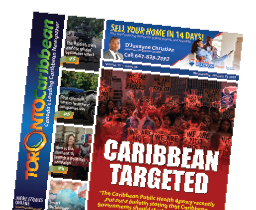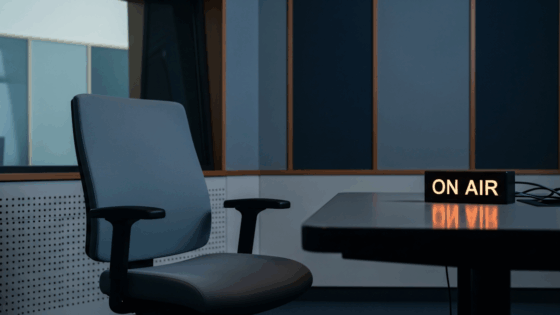BY JANIECE CAMPBELL
I hate needles. I don’t think there’s anything in this world that can send shivers down my spine the way that a freshly unpackaged needle can. I have extremely unpleasant middle school memories of lining up to get my shots for meningococcal disease, hepatitis B and HPV. Outside of the freedom of getting out of math class for thirty minutes, I didn’t see much of a reason behind these vaccines.
Twelve years later, I can see that this heavily debated topic is something far bigger than the realm of my middle school. Although the World Health Organization (WHO) claims that vaccines help to prevent 2-3 million deaths from a multitude of life-threatening diseases, there’s still a strong opposing voice against them.
How could that be? How could there be a voice against life-saving medicine?
Smallpox was a devastating disease thought to date back to the Egyptian Empire around the 3rd century BCE. This speculation is based on a smallpox-like rash found on three mummies, according to the Center for Disease Control and Prevention (CDC). In 1967, the Intensified Eradication Program initiated with a plan to globally eliminate the illness through the introduction of a high-quality vaccine. By 1972, the United States had eradicated smallpox and on May 8th, 1980, the 33rd World Health Assembly officially declared the world free of the disease. This is considered the biggest achievement in international public health thus far.
As the COVID-19 pandemic rocked the globe, countries around the world are anxious to get their hands on a vaccine as soon as possible. With the millions of dollars invested into the hunt for a vaccine, many researchers worldwide are aiming for approval by the beginning of 2021. The re-opening of the economy and global efforts for a cure have re-energized anti-vaccine critics who are already protesting for what they refer to as their ‘medical freedom.’ Although often dismissed, the anti-vaccination groups may have a striking argument about the awaiting COVID-19 vaccine. If vaccine development normally has to go through five vigorous stages over the course of at least ten years, how can we trust a vaccine to be safely tested and available on the market within a few months?
In an exclusive interview with Robert F. Kennedy Jr., Toronto Caribbean Newspaper’s own Simone Smith had an in-depth conversation about the safety and efficiency of vaccinations. Kennedy, a renowned voice in the vaccine movement since 2005, founded the Children’s Health Defense (previously called World Mercury Project) to challenge and advocate against vaccine regulation, and fluoridation of drinking water.
“I am not anti-vaccine. People call me that as a way of discrediting me or marginalizing me,” he firmly states. “I support safe vaccines that are tested in the way that other products have to be tested.”
Robert F. Kennedy Jr. has quite an unsettling reputation surrounding his claims on how harmful vaccinations can be, especially within his own family. In 2019, his siblings and niece published a piece on Politico, stating that he’s tragically wrong about vaccines. “His and others’ work against vaccines is having heartbreaking consequences. The challenge for public health officials right now is that many people are more afraid of the vaccines than the diseases, because they’ve been lucky enough to have never seen the diseases and their devastating impact. But that’s not luck; it’s the result of concerted vaccination efforts over many years. We don’t need measles outbreaks to remind us of the value of vaccination,” an excerpt from the article reads.
In the last year, a record breaking high of 1,282 individual cases of measles were diagnosed in the United States, the greatest number since 1992. The majority of cases were among people who were not vaccinated for measles, according to the CDC. Still yet, Kennedy is certain on his beliefs and says that he has observed the effects of vaccination first-hand within his own immediate family.
“In 1986, when [Congress passed the National Childhood Vaccine Injury Act] we were seeing an epidemic of chronic disease in Canada and the United States. I had 11 brothers and sisters. I had 77 cousins. I didn’t know of anybody with a food allergy or eczema. And yet, I have six kids and they all have allergies. Why is that? Whatever happened began in 1986. That same year, the odds of chronic disease raised from 1 in 10,000 in my generation to 1 in 34 children today.”
Chronic disease refers to a multitude of life-long illnesses such as lupus, diabetes, rheumatoid arthritis and developmental disorders. Some would argue that many of these abnormalities are inherited genetically or caused by an error in the human DNA. Kennedy thinks otherwise.
“Epidemics are not caused by genes; they’re caused by toxins in the environment. Genes can give you the vulnerability, but you need to add the toxins. There are lots of new toxins. We have cellphones, and neonicotinoid pesticides. There are a lot of things you can blame for this explosion of chronic disease. But the best of science has linked the cascade of chronic disease to vaccines. I gave my kids every vaccine that was recommended. Now, I wish I could go back in time.”
There seems to be a global race amongst nations on who will get access to the COVID-19 vaccine first. Although the issue at hand is urgent, should we really be opting for a ‘quick-fix’ solution?
“Roughly a vaccine takes about fifteen years to get to the market. What if a vaccine causes cancer? You won’t know that for at least four to five years. If you only test a vaccine for forty-five days, you’re only going to see what happens in forty-five days. They’re doing a lot of shady things in these tests.”
He continues.
“The leading vaccine right now is the Moderna vaccine and it was tested on 45 people. Bill Gates is one of the investors and Dr. Anthony Fauci put half a million dollars of our taxpayer money into that vaccine. They tested it in Washington and gave it to 45 volunteers. Fifteen got the low dose, fifteen got the medium dose, and fifteen got the high dose. In the low dose group, 1 of the people got sick. That’s 6%. That’s very alarming. In the high dose group, 3 of them got sick. They’re going to give this to a billion people. If 20% of a high dose group is getting sick, then who wants to take that chance?”
Point taken – those statistics do sound pretty frightening out loud. But the question remains. If vaccination isn’t the safest way to go, then how do we battle this highly infectious virus?
“The FDA is saying that they’re going to allow vaccines that are 30-50% efficacious. Well, I can tell you a vaccine that is 99.8% efficacious – it’s called the human immune system! You can bolster your chances of not getting infected by taking vitamin A, vitamin C, and zinc. Generally speaking, the people who have those things in their system are not affected by COVID, or they’ll recover very quickly. That’s what we ought to be focussing on: therapeutic drugs rather than the vaccine.”
What does this have to do with the African-Caribbean Community?
Systemic racism is not only evident within the criminal justice system. According to the New York Tmes, African-American and Latin residents of the United States have been three times as likely to become infected as their white neighbours. Data shows that they are also nearly twice as likely to die from the virus as well. Mr. Kennedy took time to educate the community on what we need to know.
“Polling shows that the skepticism is the highest in the African-American community, and there’s good reason for that. There’s lots of studies that show that African-Americans are much more vulnerable to vaccine injury. Vaccine injury, along with other disease like COVID, targets people with vitamin D deficiency. You’ll notice about 95% of people who died from COVID are vitamin D deficient. And that may be one of the reasons why it is attacking African-Americans because virtually, every black person is vitamin D deficient.”
Vitamin D insufficiency is fairly prevalent among black people. Melanin lowers the skin’s ability to produce vitamin D in response to sunlight exposure, as it blocks out twice as much UV radiation as white skin. According to the Cooper institute, there tends to be a greater risk for chronic and potentially life-shortening conditions such as stoke, hypertension, cardiovascular disease, diabetes and cancer, some of which are associated with vitamin D deficiency.
“African-Americans also have higher testosterone than caucasians. Testosterone amplifies the neurotoxicity, particularly of mercury. Estrogen tends to wrap around the mercury molecules and protect the female brain. Autism and other developmental disorders are more pronounced in the male population due to the testosterone.”
Lest we forget the horrific 1932 Tuskegee syphilis study, where 399 black men infected with syphilis were manipulated into being a part of a 40-year study. The men, who were promised: free medical exams, free meals and burial insurance, were unaware that the study was to observe the effects of the untreated infection. Even with the introduction of penicillin in the 1940s, the men were never given the drug. 28 of the original 399 black men died of syphilis, 100 died of related complications, 40 of their wives were infected, and 19 of their children were born with congenital syphilis. It’s no surprise that people of colour are inadequately represented in medicine, due to heartbreakingly having mistrust towards medical institutions from past instances like this.
“We know that African-Americans react differently to vaccines than Caucasians. They’re more sensitive to antigens. They need half the antigens that caucasians need; yet, it’s a one-size-fit-all program. Maybe some benefit from vaccines, but it’s clearly true that African-Americans are disproportionately injured by vaccines.”
So, what do we believe? The WHO claims that vaccine hesitancy is one of the top ten threats to global health, so should we be the first in line once the COVID-19 vaccine is mandated? Kennedy concludes with an ominously thought-provoking line.
“Don’t trust me. Don’t trust your doctor. Don’t trust the CDC. Do your own research.”
Stay in the loop with exclusive news, stories, and insights—delivered straight to your inbox. No fluff, just real content that matters. Sign up today!













Dale
August 6, 2020 at 1:35 pm
So they will call anyone who questions the WHO’s protocol, or their real objectives, a conspiracy theorist.
Well if you have a theory, then watch it come to fruition factually, it is no longer a theory it is a truth.
I pray for people to pay attention, not just to prime time media, but to what is happening around you.
It’s almost like someone who is an atheist , and Jesus Christ himself stands in front of them and slaps them in the face, then they continue to deny that He is real.
Thank you Robert Kennedy for having the courage to tell the truth, it’s a shame many won’t believe you.
Christopher
August 22, 2020 at 10:44 pm
Whem he starts talking to us about economic justice and immigration reform, he can have a conversation. Until then, he can miss us with this whatever it is. I would also like to ask him if Black Lives Matter when it comes to policing.
Josh Presaud
August 25, 2020 at 10:18 pm
Christopher, that’s said with a little bit of ignorance, there are white people that would like to help. This article and interview talks about the negative effects vaccines are having on the POC population and you say “he can miss us”?
Take your ego down a notch and take a look, you may learn something that may save your life and your loved ones, they are prepping to vaccinate OUR PEOPLE first. Milinda Gates said it point blanc, BLACK PEOPLE SHOULD GET THE VACCINE FIRST.